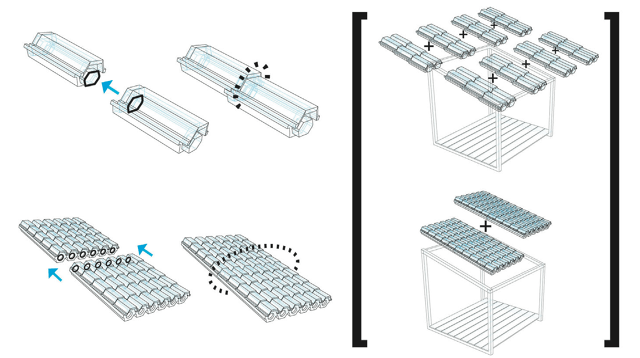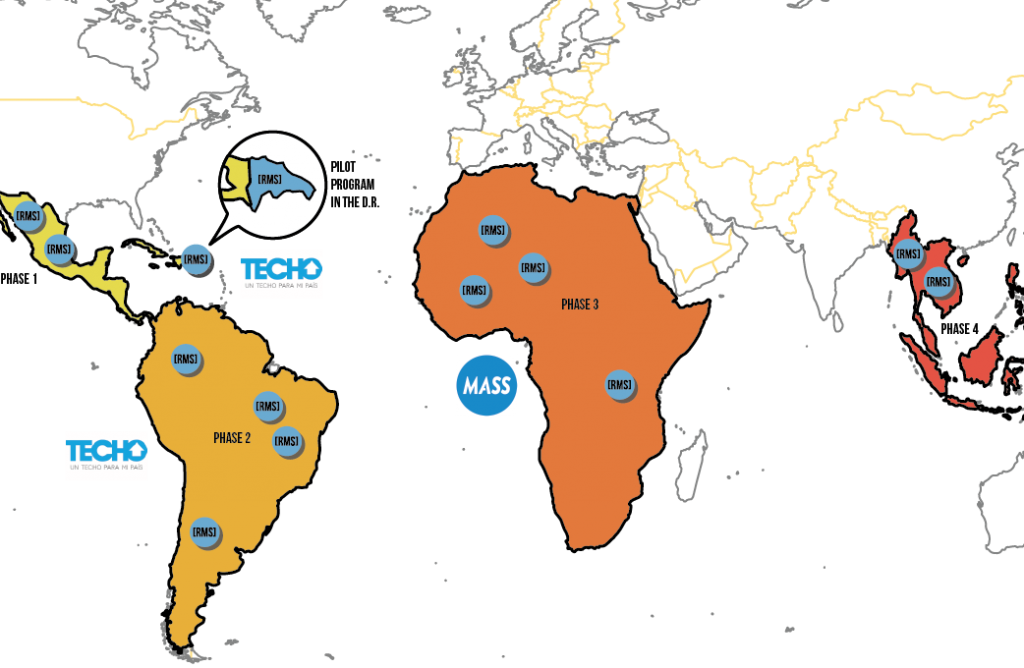3D Printed Roofing Could Help Transform Low Income Housing

The modular nature of RMS’ roofing is intended to make it easy to install and maintain. Courtesy of RMS.
Latest News
November 13, 2014
There might not be many finished products quite yet, but at this point most it’s at least possible to wrap your brain around the idea of 3D printed construction. When a man in Minnesota manages to print a castle almost single-handedly, it seems reasonable to assume the technology is viable.
The technology to print a building can also be environmentally friendly, using local materials to provide shelter for homeless people around the world. What can top that? Roofing, literally. Resilient Modular Systems (RMS) is a startup that is looking to additive manufacturing (AM) to help solve roofing issues in the poorer sections of the world.
 The modular nature of RMS’ roofing is intended to make it easy to install and maintain. Courtesy of RMS.
The modular nature of RMS’ roofing is intended to make it easy to install and maintain. Courtesy of RMS.In many parts of the world, roofing is constructed from cheap, easily replaceable materials such as corrugated iron. Not only do roofs made from these sorts of materials leak, they are completely inadequate for insulation, making them nearly useless for regulating temperature inside a dwelling. A corrugated iron roof will also rust through in around two years, leading to wasted resources.
RMS has an idea to change all that by offering inexpensive roofing to people around the world. Based on the appearance of terracotta tiles, the new roofing tiles are actually manufactured from recycled plastic. Plastic tiles last longer than corrugated metal, and are possible to replace or repair in small areas, rather than requiring a whole new roof.
From the website:
RMS addresses these [roofing material] problems through an easy to construct modular system composed of locally sourced materials. By having these features, the impact through the performance of our design aims to reduce the CO2 in production, save cost per unit, and reduce lifetime costs and capital expenditures through local sourcing and distribution.
 RMS would like to extend its program across the world in stages, starting with its pilot program in the Dominican Republic. Courtesy of RMS.
RMS would like to extend its program across the world in stages, starting with its pilot program in the Dominican Republic. Courtesy of RMS.The design for new roofing includes two different types of tile. One is a 4x4-ft. slab that provides the primary roofing, and the other is a smaller tile meant to fill in gaps, and be useful for making repairs. The parts are interchangeable and interlocking. According to RMS, the roofing can be used to cover a 12x12-ft. room without requiring support.
AM enters the picture when it comes to building the smaller roofing tiles. It isn’t all that difficult to grind down plastic and form it into filament ready for use in a 3D printer. Most commonly available AM systems should be able to print out the small tiles, which will help keep a roof in working order. RMS is looking to work with local toy companies to build the larger pieces, which will be made with injection molding.
Below you’ll find a short video about RMS’ mission.
Subscribe to our FREE magazine, FREE email newsletters or both!
Latest News
About the Author
John NewmanJohn Newman is a Digital Engineering contributor who focuses on 3D printing. Contact him via [email protected] and read his posts on Rapid Ready Technology.
Follow DE





